Hefeng Xiexiang Tu: An Illustrated Album of Harmony, Abundance, and Auspicious Symbols (龢丰协象图册)
Overview
Commissioned during the Qing Dynasty in 1811 by Emperor Jiaqing, this 12-panel illustrated album was painted by Huang Yue (黄钺, 1750–1841), a scholar-official and artist renowned for his landscapes and literary works like Twenty-Four Categories of Painting (二十四画品). Titled Hefeng Xiexiang Tu (龢丰协象图册), it captures rural New Year traditions through vibrant ink-and-color scenes infused with symbolic motifs and poetic inscriptions by the emperor. Each panel blends meticulous detail with playful “comic-like” brushwork (bǐ jiǎn yì gāi 笔简意赅), offering a vivid snapshot of Qing-era agrarian life and imperial ideology. The album is now housed in the National Palace Museum, Taipei.
Structure and Symbolism
Key Themes and Scenes
The album’s title translates to “Harmony, Abundance, and Auspicious Symbols,” reflecting its dual purpose: celebrating agrarian prosperity and legitimizing imperial rule through folk symbolism.
- Taiping Lagǔ (太平腊鼓, “Peace Drums”)
- Depiction: Five children in colorful attire beat Taiping drums (太平鼓), a percussion instrument symbolizing communal joy and peace.
- Symbolism: The drumming echoes Confucian ideals of social harmony, while the children’s carefree play embodies innocence and renewal.
- Huangyang Sizao (黄羊祀灶, “Yellow Sheep Sacrifice to the Kitchen God”)
- Ritual: A family offers a yellow sheep to Zao Shen (灶神), the Kitchen God, based on a Han Dynasty legend where such sacrifices brought wealth to the donor.
- Cultural Context: The scene underscores the Qing court’s integration of folk beliefs into state rituals to reinforce moral governance.
- Tuniu Bianchun (土牛鞭春, “Whipping the Spring Ox”)
- Ceremony: Officials whip a clay ox filled with grains to mark the start of spring plowing. Villagers collect the scattered grains as auspicious tokens.
- Agrarian Ideology: This ritual, dating to the Zhou Dynasty, emphasized the emperor’s role as a mediator between Heaven and agrarian prosperity.
- Wuyun Xianrui (五云献瑞, “Five-Colored Auspicious Clouds”)
- Final Panel: Multicolored clouds envelop a pavilion, symbolizing divine blessings for national peace and abundance.
- Imperial Message: The clouds represent the Mandate of Heaven, legitimizing Qing rule as a cosmic order.
Artistic Techniques
- Composition: Huang Yue employs a mix of vertical scroll aesthetics and dynamic perspectives, such as the receding crowd in Tuniu Bianchun.
- Color Symbolism: Red dominates (firecrackers, lanterns) for luck, while gold accents highlight imperial patronage.
Historical and Cultural Context
- Emperor Jiaqing’s Role
Each panel includes Jiaqing’s poems, reframing folk customs as imperial virtues. For example:- In Chuntie Yongshu (春帖佣书, “Writing Spring Couplets”), his verse “硃箋試墨寫宜春” (“On crimson paper, ink flows to inscribe spring’s auspicious verses”) links literacy to moral governance.
- The album was created post-White Lotus Rebellion (1796–1804), serving as propaganda to project stability and benevolence.
- Huang Yue’s Legacy
A critic of corruption (notably opposing Heshen 和珅), Huang infused his art with ethical undertones. His minimalist style, seen in scenes like Huacu Youchuang (花簇油窗, “Floral Window Decor”), contrasts ornate court paintings, emphasizing grassroots authenticity.
Translation and Modern Relevance
- Terminology Strategy
- Retain pinyin for rituals (e.g., Tuniu Bianchun) with annotations:
- Wuyun Xianrui (五云献瑞): “Five-Colored Auspicious Clouds,” symbolizing cosmic harmony.
- Contextualize idioms:
- “物阜民丰” → “Bountiful harvests and thriving populace”.
- Retain pinyin for rituals (e.g., Tuniu Bianchun) with annotations:
- Exhibitions and Revival
- The album features in exhibitions on Qing folk culture, such as Taipei’s Lunar New Year Traditions (2024).
- Traditional practices like Taiping drum dances are revived in Anhui and Jiangsu during modern Spring Festivals.
Appendices
- Huang Yue’s Inscription:
“龢豐協象,祈願天下太平” (“Harmony, abundance, and auspicious symbols—prayers for universal peace”).
- Digitized Access:
High-resolution scans are available via the National Palace Museum’s Digital Archive.

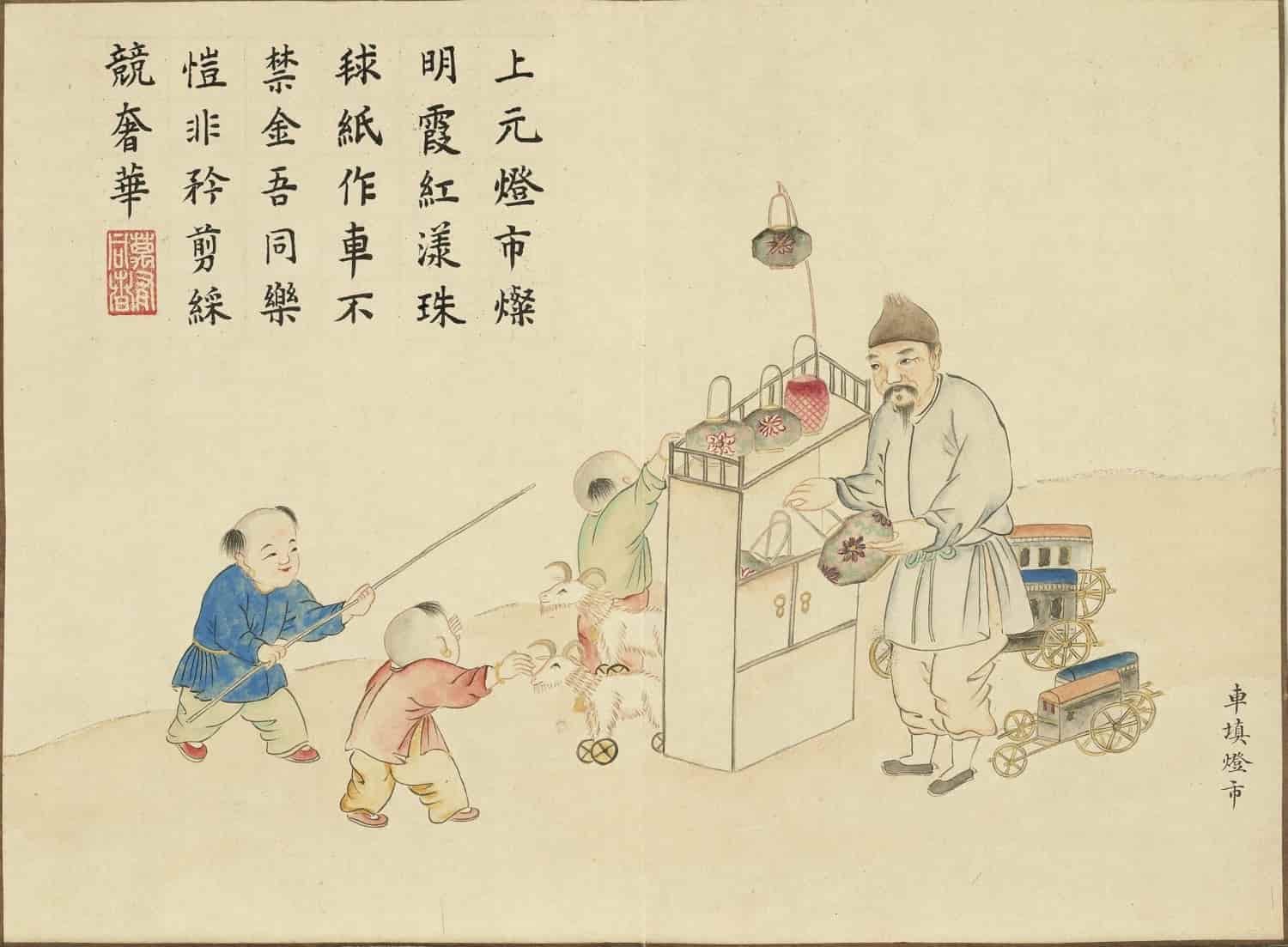
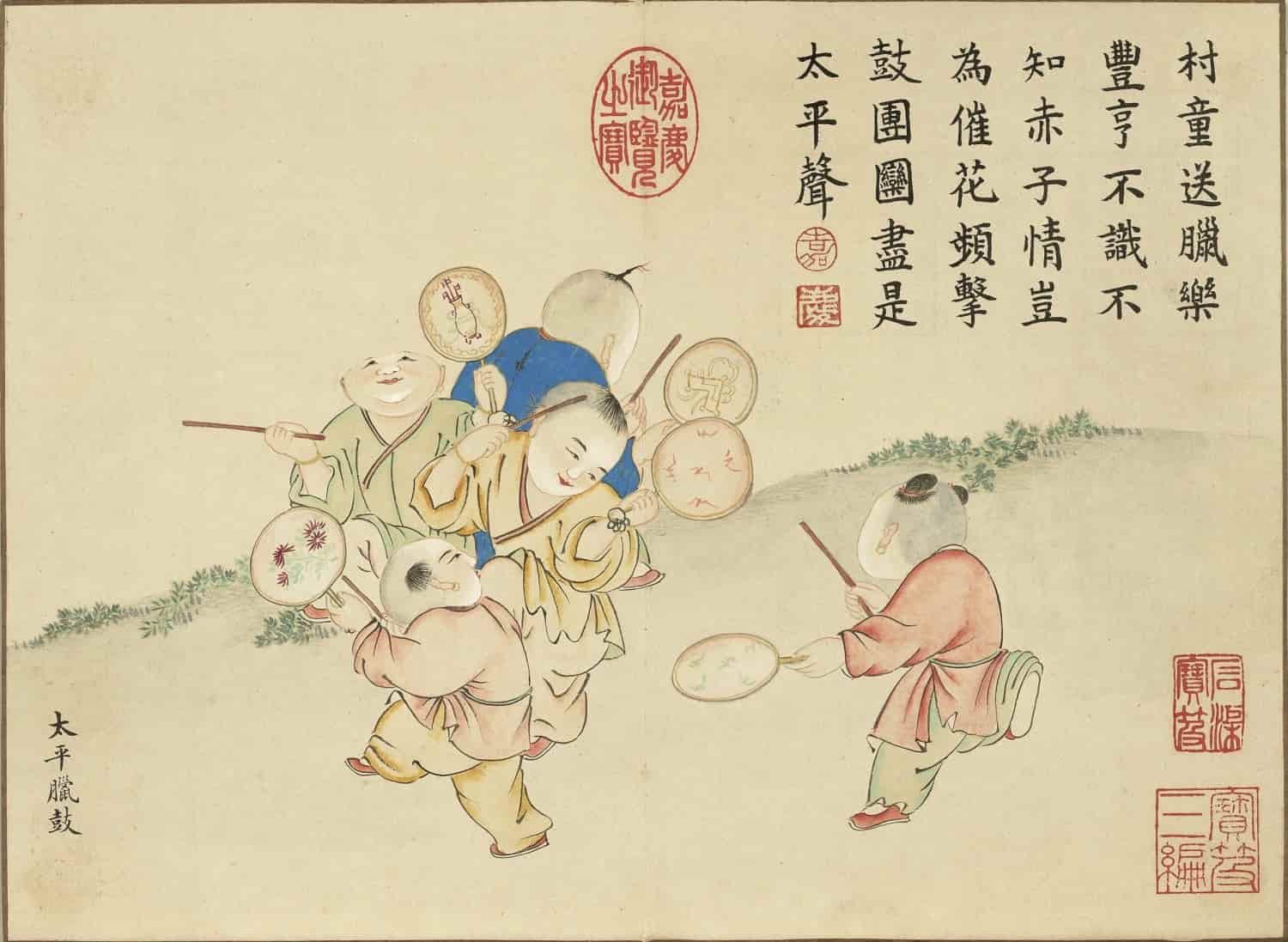
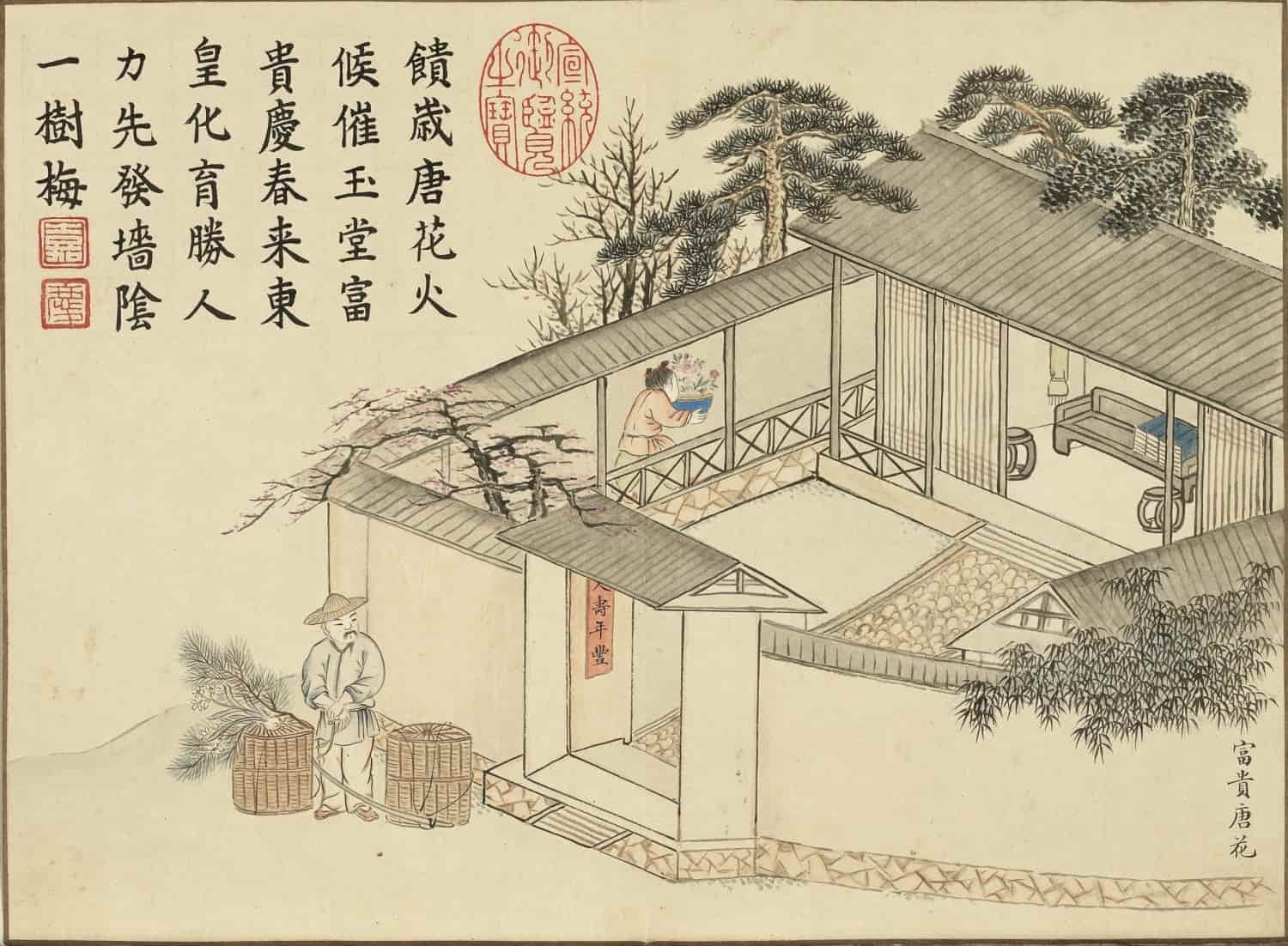
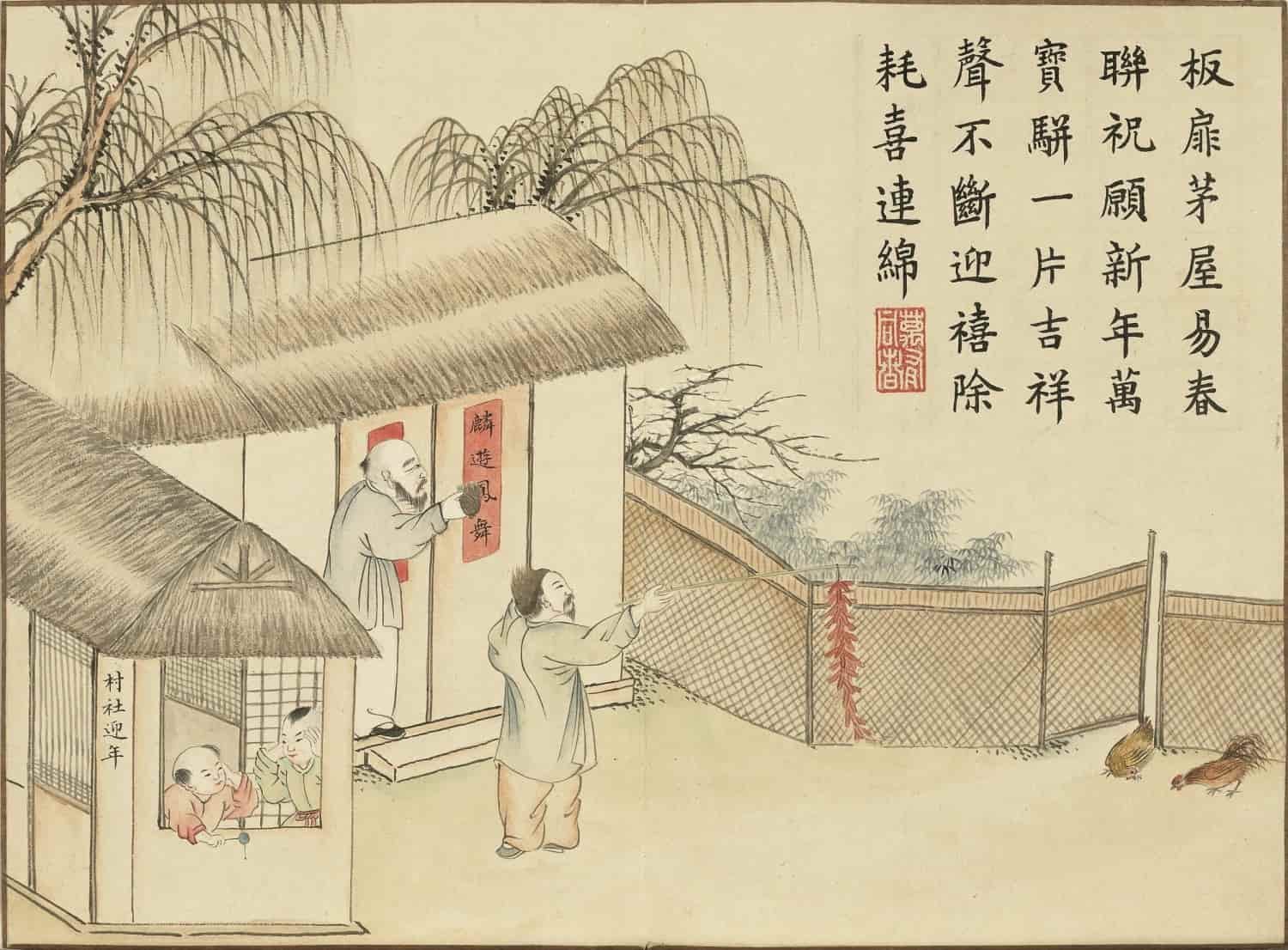
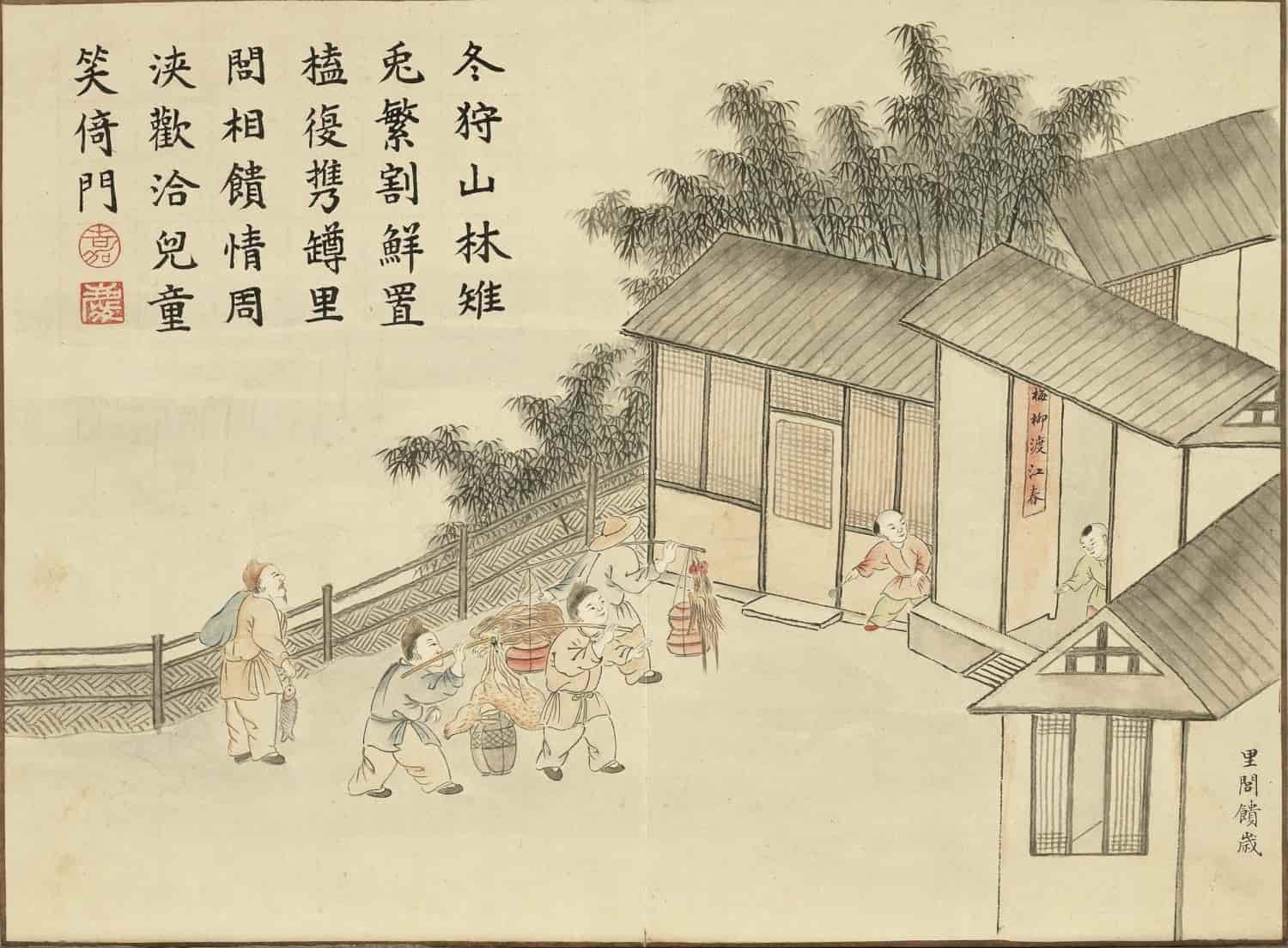
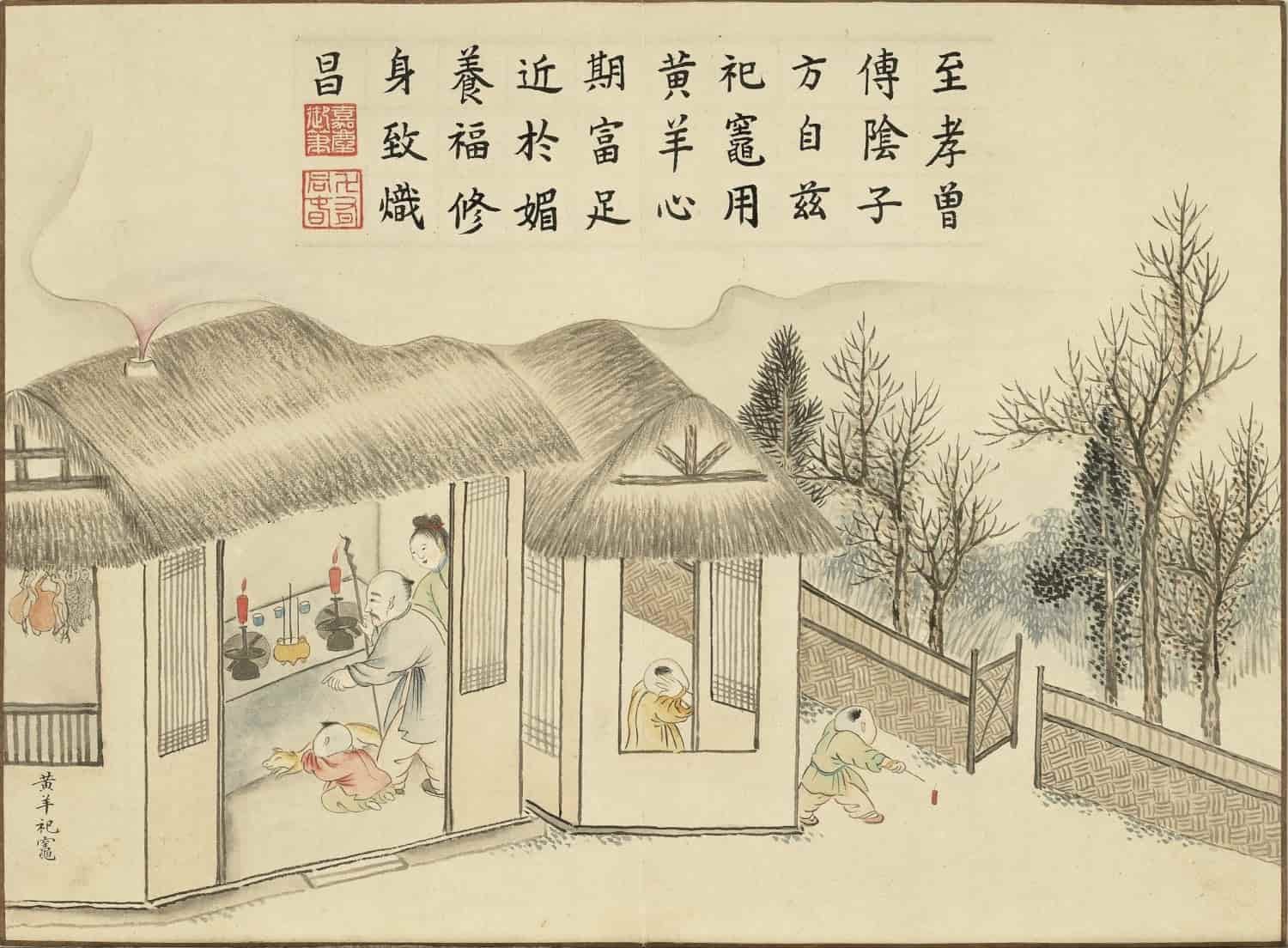
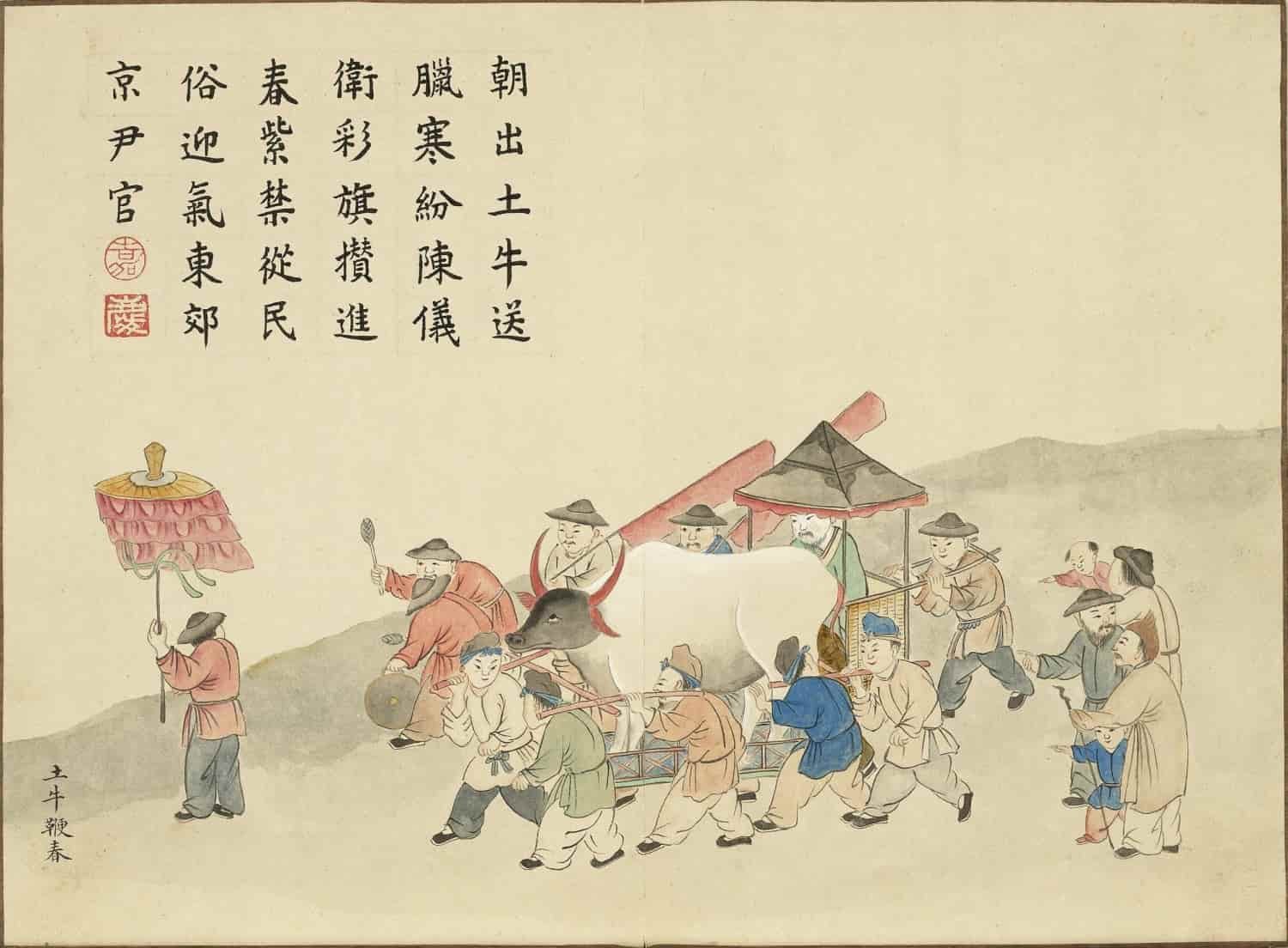
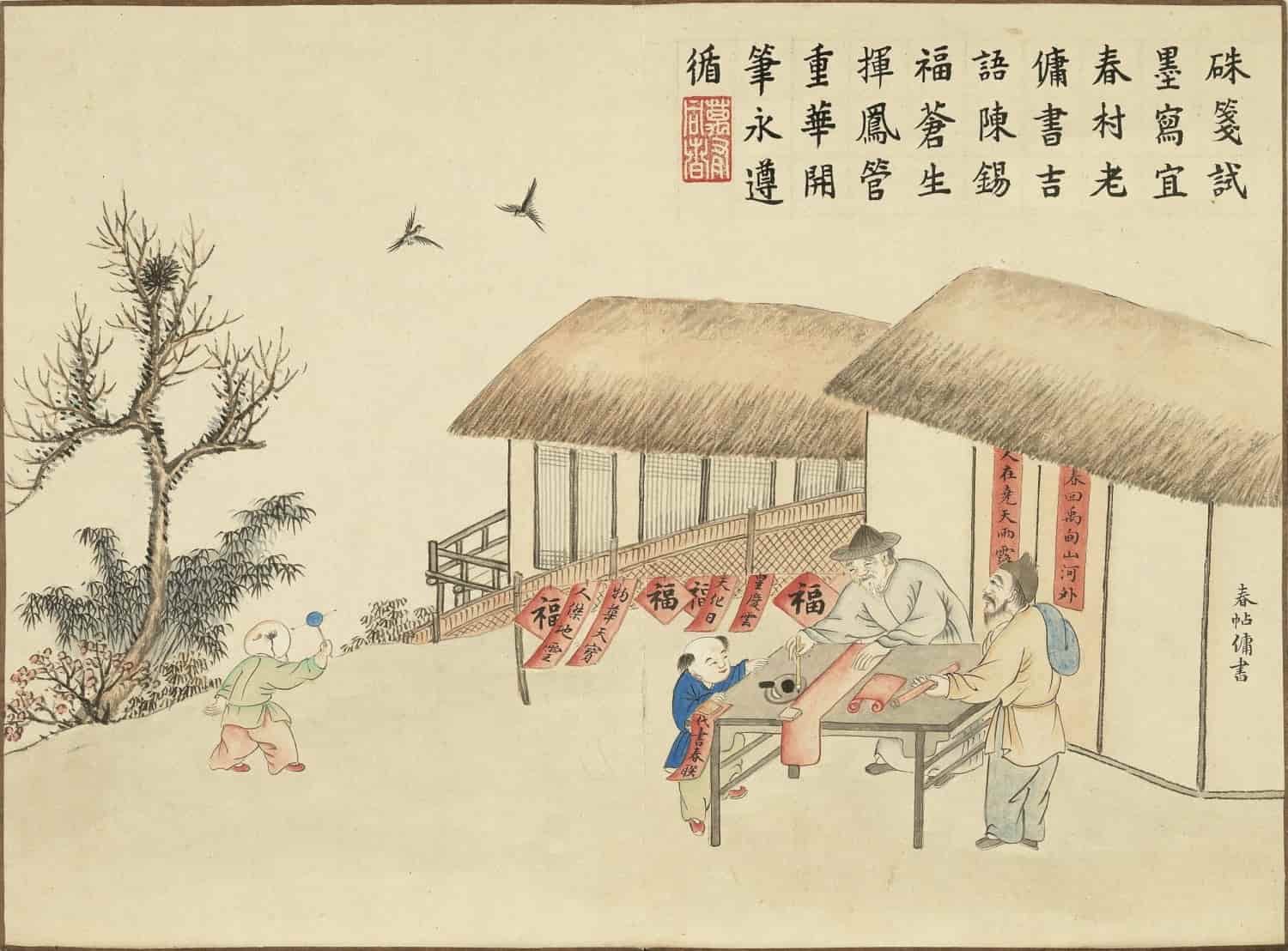
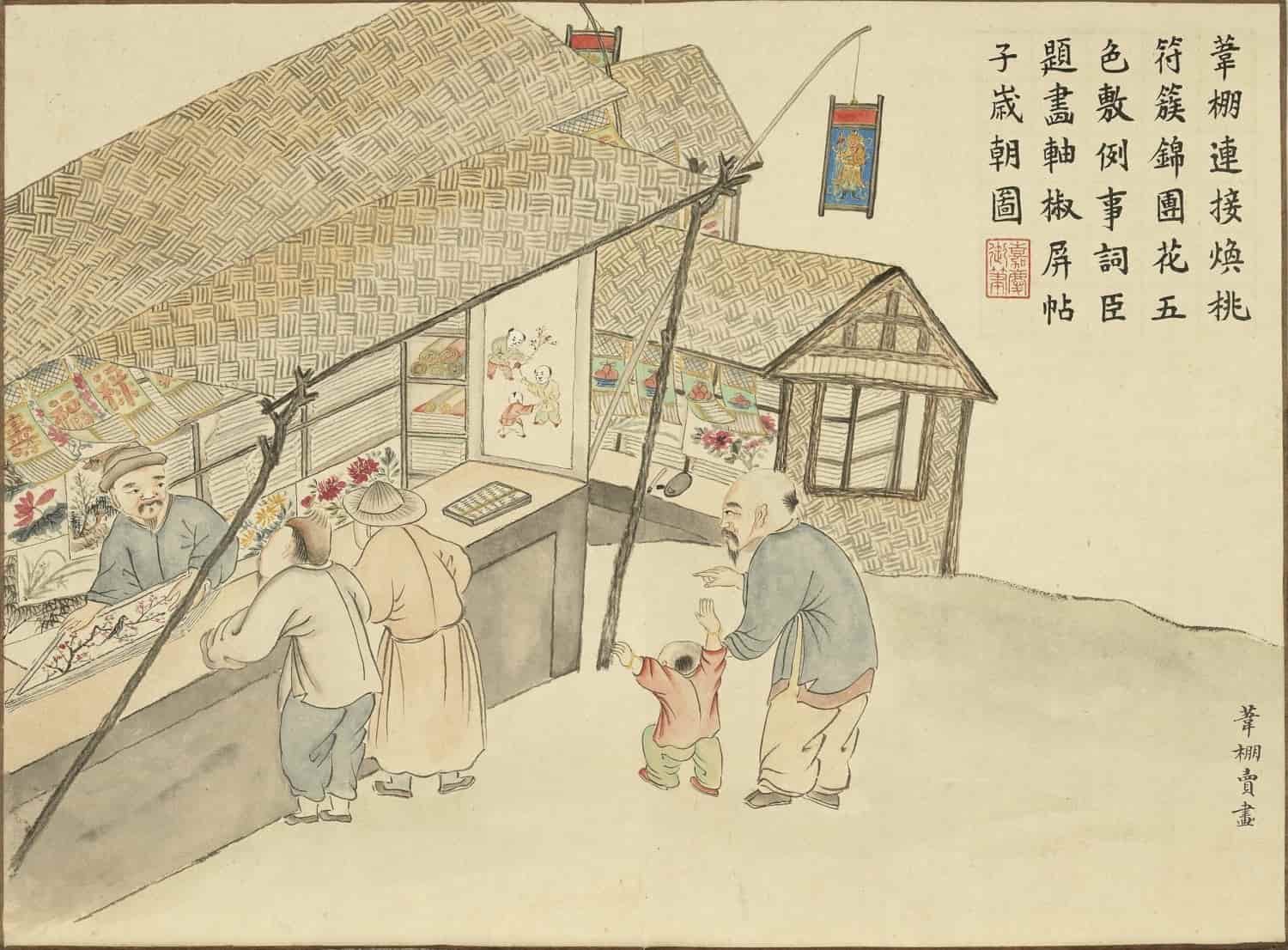
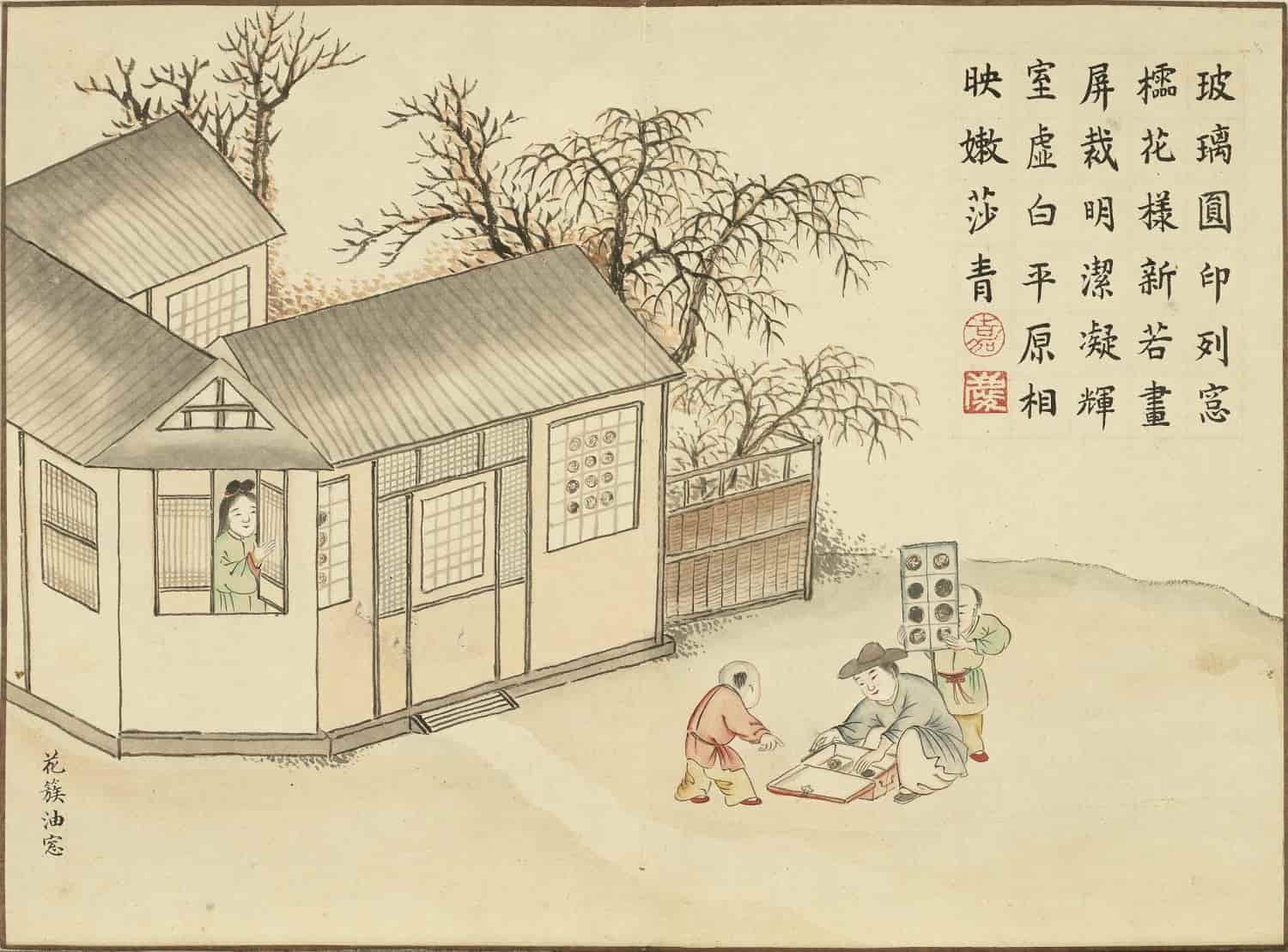
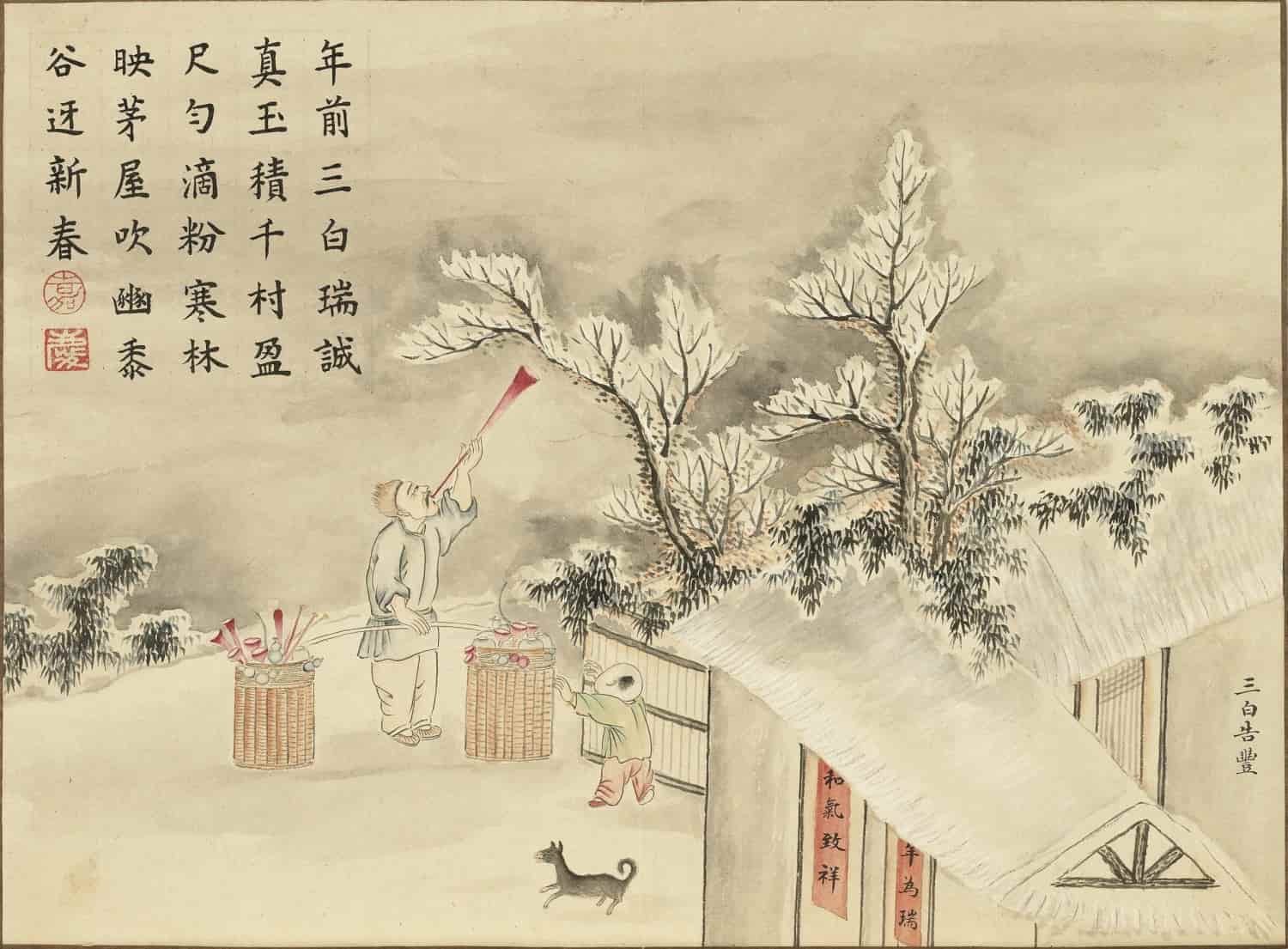
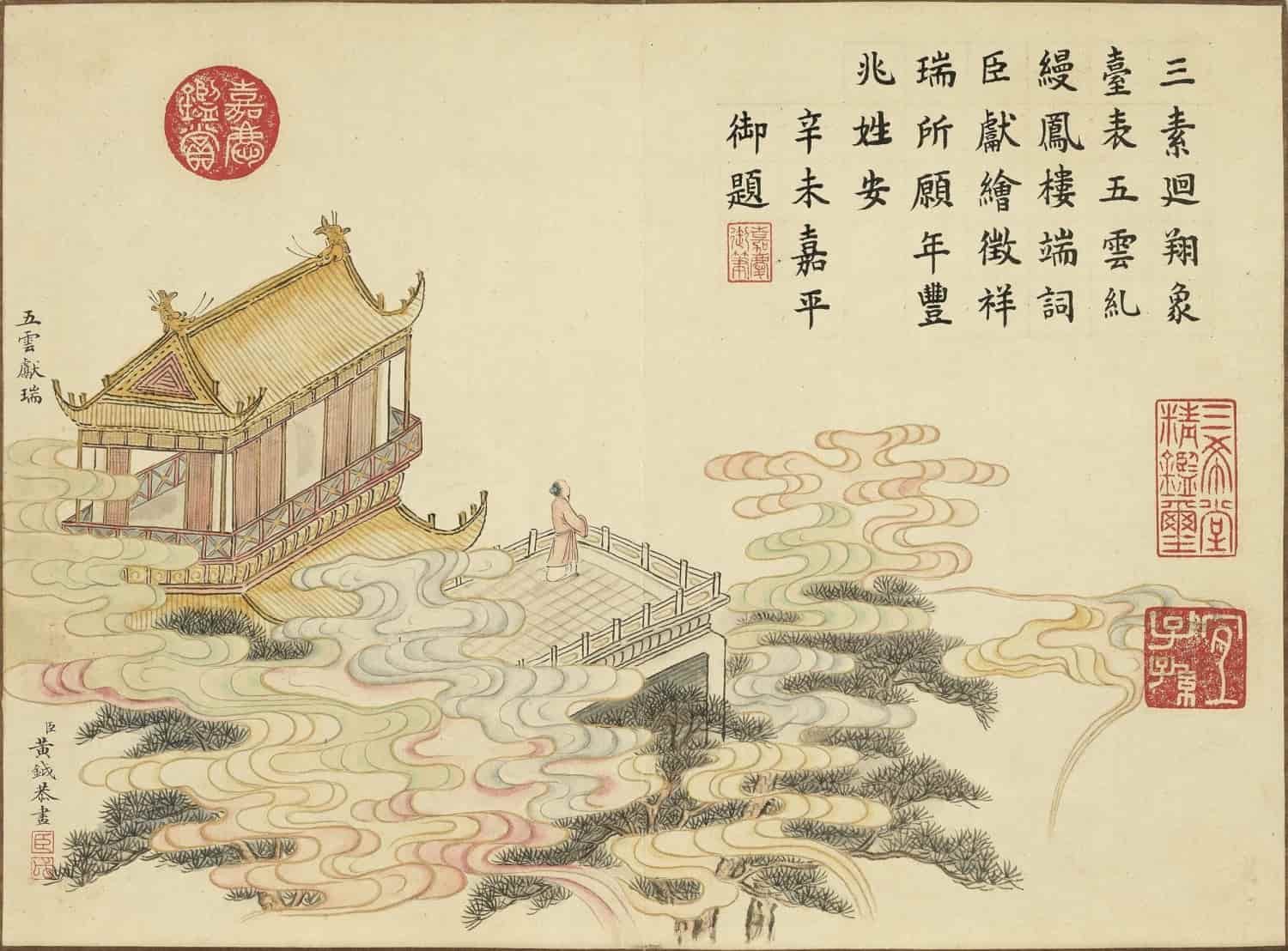
评价
目前还没有评价